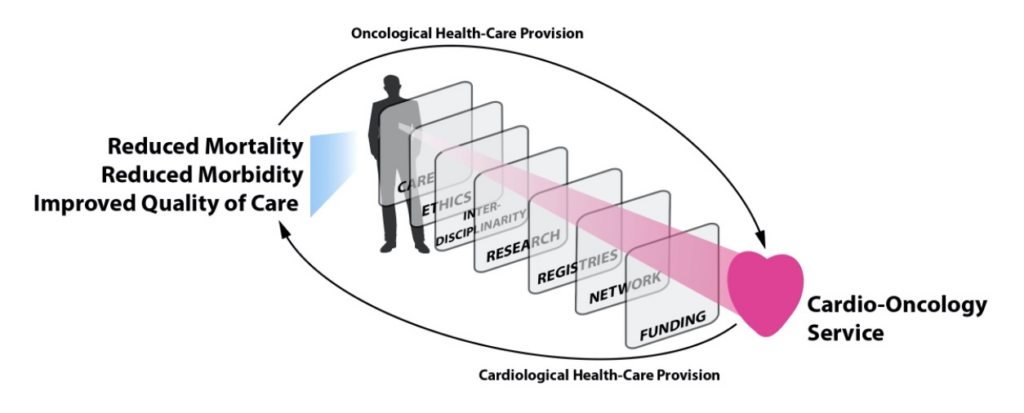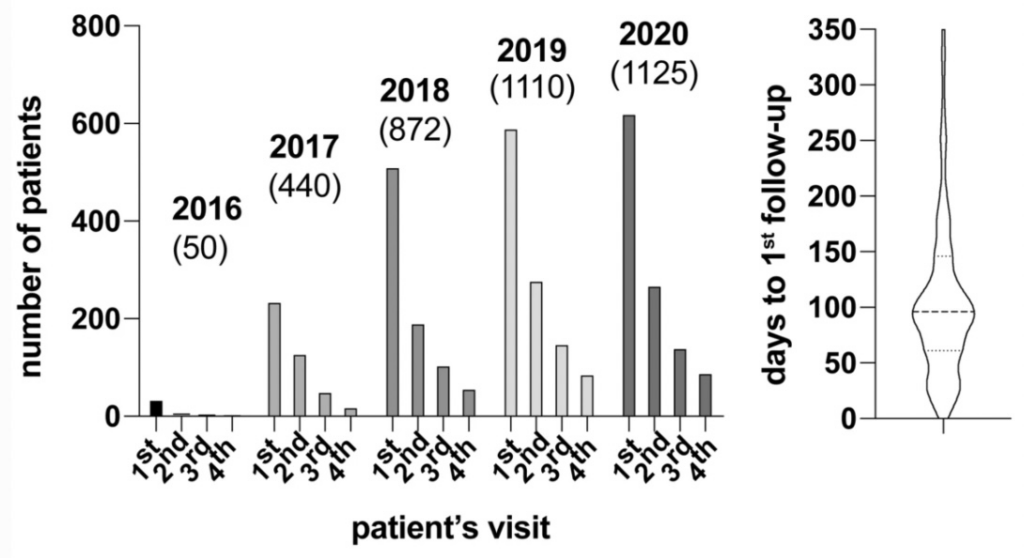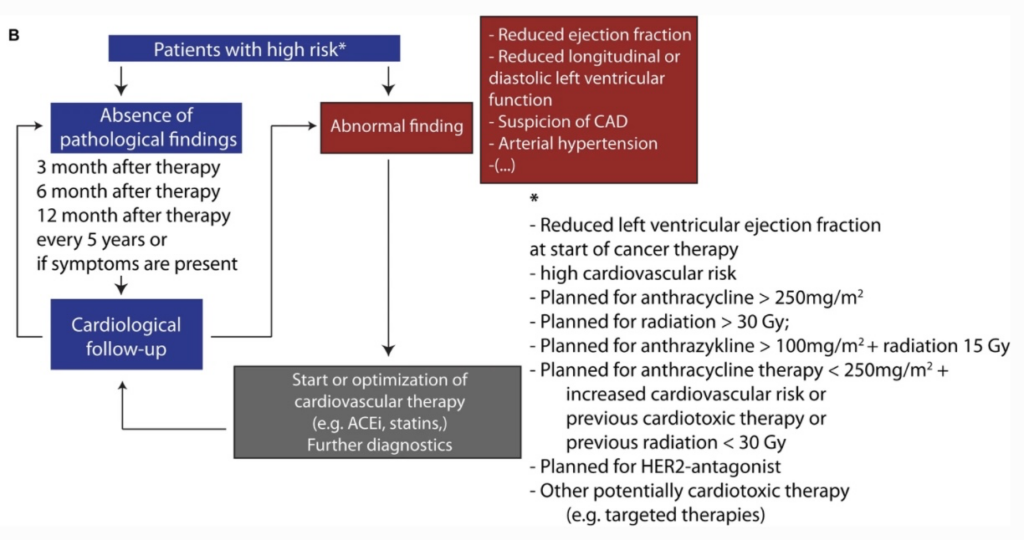
Immune-Checkpoint-Inhibitor (ICI) – associated myocarditis – We are currently investigating predicting factors of ICI – associated myocarditis. We collaborate with the UCSF (San Francisco) and the Hopital Salpetière (Paris) and a group of international partners in order to establish standardized operating procedures for the diagnosis of ICI – associated myocarditis. (Finke et al. Front Cardiovasc Med 2021; Finke et al. Cancers 2021; Lehmann et al. JAMA Cardiol 2021; Lehmann et al. Circulation 2023)

Advanced cardiac imaging in Cardio-Oncology – In collaboration with the Department of Nuclear Medicine at the University Hospital of Heidelberg we investigate the opportunities of established and novel tracer for the us of cardiovascular pathologies. Current projects are focused on the activation of cardiac fibroblasts and metabolic imaging by the use of 18F-FDG. Beside nuclear imaging techniques, we investigate the use of early cardiac magnetic resonance imaging (cMRI) to determine individual risk for cardiac side effects of oncological therapies. (Heckmann et al. Circ Cardiovasc Imaging 2020; Heckmann et al. ESC Heart Failure 2019; Finke et al. Front Cardiovasc Med 2021)

Cardiac biomarker in Cardio-Oncology – Based on data from our HEidelberg Cardio-Oncology REgistry (HEartCORE), we investigate the use of cardiac troponin (hs-cTnT) to identify high-risk patients. We are further conducting prospective clinical trials to investigate biomarker-driven surveillance strategies for cancer patients. (Lehmann et al. Clin Res Cardiol 2021; Finke et al. ESCHF 2021; Lehmann et al. Circulation 2023)


Standardized workflows in clinical Cardio-Oncology – Together with our national and international network, we establish standardized operating procedures for surveillance of oncological patients who receive potential cardiotoxic treatments. We further develop strategies for the diagnosis and treatment of cardiac side effects of oncological diseases. We further work on establishing a german-wide network of cardio-oncology units. (Rassaf et al. Clin Res Cardiol 2020; Lehmann et al. JAMA Cardiol 2021)

Contact Person: Daniel Finke, Markus Heckmann, Sebastian Romann
